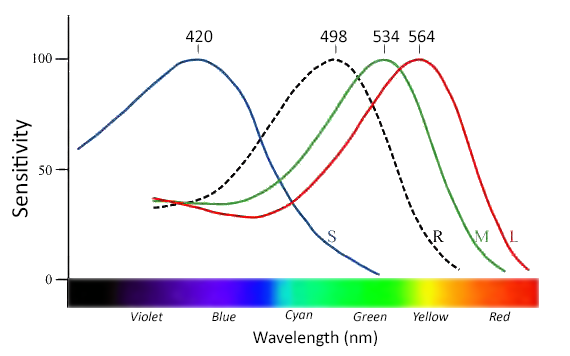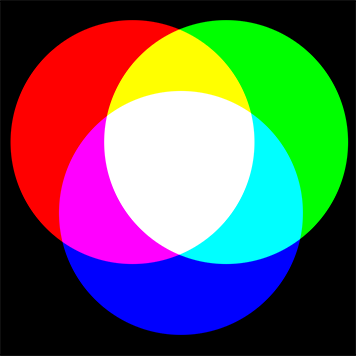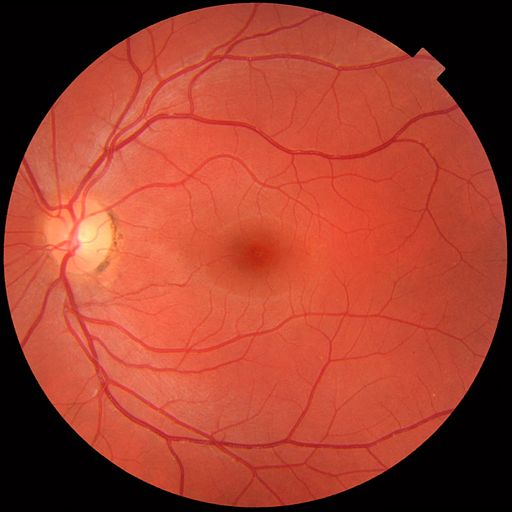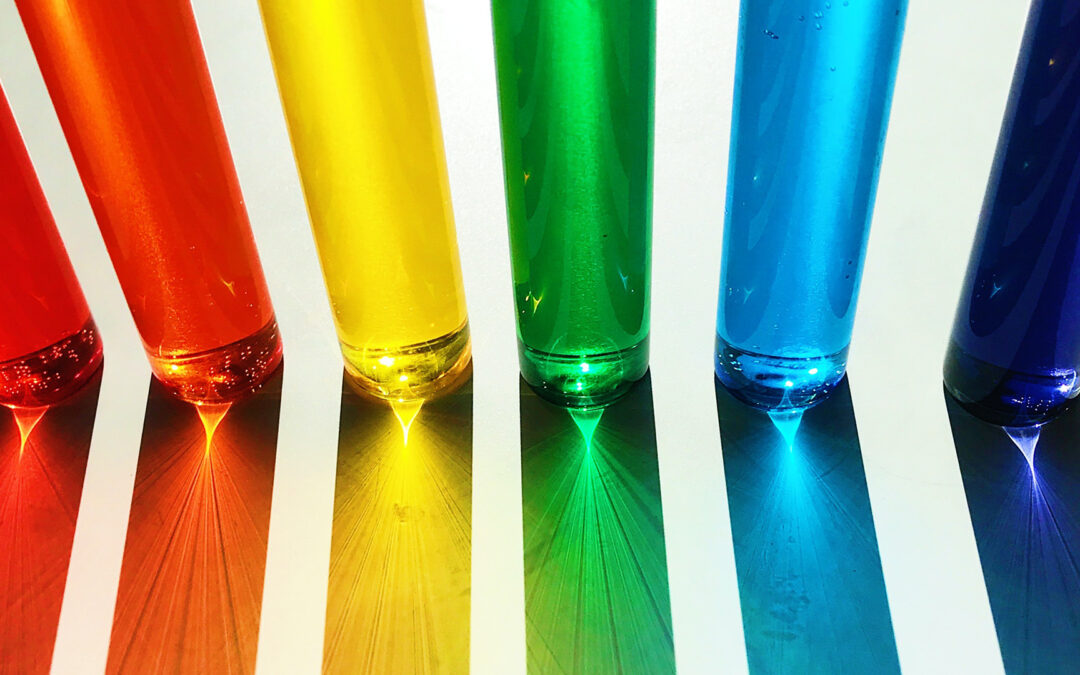Our eyes and brain provide us with a nearly instantaneous mental picture of our immediate surroundings. This in itself is amazing and should prompt us to thank and worship our Creator. But the Lord has enhanced our visual experience with a wonderful feature: color. What exactly is color, and how do our eyes and brain process it?
Color
People tend to think of color as a physical property of a substance or of light. But it really isn’t. Color is a mental experience. Particles of light do not literally have color, nor do physical substances. The only place color truly exists is in the mind. But then how do we make sense of statements like “grass is green” and “the sky is blue?” What we really mean by this is that grass absorbs certain wavelengths of light and reflects others, such that when those wavelengths strike our retina, they are processed into signals that our brain interprets as “green.” But the photons (the particles of light) do not have color, and under the right circumstances those same photons (combined with others) can produce a different mental experience (such as “white”). So how does this work?
In previous articles, we explored the retina – the dark, internal, light-sensing surface of the eye. The retina contains light-sensitive cells called rods and cones. The cones are what allow us to experience color. In healthy human eyes, there are three types of cones. Each type is filled with a unique photopsin – a light-sensitive chemical. The L-cones are filled with a photopsin that is maximally sensitive to long wavelengths of light (hence “L” for “long”), with peak sensitivity to light of 564 nanometers. The M-cones are filled with a photopsin that is maximally sensitive to medium wavelength light with peak detection at 534 nanometers. The S-cones are most sensitive to short wavelengths of light, with peak sensitivity at 420 nanometers.

In fact, all three cones can detect a range of wavelengths. But the signal they send will be strongest if the wavelength of the light is near their peak sensitivity. In other words, even the L-cone can detect short wavelengths of light, but it produces a much weaker signal than the S-cone does for short wavelengths. Most of the light that enters our eyes is comprised of many different wavelengths. But if a majority of those wavelengths are long, the signal from the L-cones is strongest and we perceive the color red. Conversely, if the majority of wavelengths are short, the S-cone response is strongest and we perceive blue, or violet. A majority of medium wavelengths with an absence of short or long produces the sensation of green. If all wavelengths are present in roughly the same proportions, we perceive white.[1]
Interestingly, the majority of our cones are L-cones, with M-cones being the second most common. The ratio of M-cones to L-cones varies from person to person. However, only about 2% are S-cones. This means that our visual acuity is highest for longer wavelengths, and lowest for short wavelengths. So, a distant illuminated sign that appears red will be easier to read than one that is blue – all other factors being equal.
3D Color Space
All colors that we are capable of perceiving are due to the relative contributions of the L, M, and S cones. For this reason, it is possible to produce any color experience by combining three different wavelengths of light in the right proportions. Televisions and computer monitors make use of this principle. A standard television produces our color experience by combining light from three color elements – red, green, and blue (the colors we would perceive if the elements were viewed in isolation). Our vision is therefore referred to as trichromatic vision. For a trichromat, any color can be produced by combining light from three other colors. This makes sense because we have three different types of cones, each sensitive to a particular color range. The possible combinations are such that a human being with healthy eyesight can discern over 10 million colors!

A trichromat has a 3-dimensional color space. That is, every possible color can be produced by combining only three primary colors in the right proportions. We might refer to light that produces a “red” experience when viewed in isolation as “red light.” If we then add red light to green light in roughly equal proportions then you will see yellow light. Add yellow light to an equal amount of blue light and you will see white light.[2] So, you can perceive “white” by combining light with only three different wavelengths in the right proportions. On the other hand, you will also perceive “white” if you combine all visible wavelengths of light in equal proportions. You cannot tell if a given “white light” is made of just three primary wavelengths of light, or all of them.
Most mammals are dichromats. They have only two types of cones, and therefore all colors they can experience can be produced by combining only two different wavelengths of light – a 2-dimensional color space. But human beings have a richer color experience due to that third cone. Some animals have more than three types of cones. Finches, for example, are tetrachromats – having four types of cones. Some animals have even more. The mantis shrimp has 12 types of cones![3] There are reports that some human beings have tetrachromatic vision due to the addition of a fourth type of cone – but it is rare. More commonly, some people are missing one of the three types of photopsins due to a mutation, resulting in dichromatic vision.
The Fall
Since the fall of man, many things no longer work perfectly in this world. Human color perception is also subject to the fall, and problems can manifest in a number of ways. A rare defect can cause the cones to fail to develop properly, resulting in total color blindness along with a substantial reduction in visual acuity.
But the most common problem with human color vision is a mutation in one of three genes that code for one of the three types of cones. This can result in either dichromatic vision or anomalous trichromacy. In the former, one of the three cone types is non-functional and therefore color vision is reduced to a 2D color space. In the latter, one of the three cone types is damaged and has reduced function, resulting in reduced capacity to distinguish colors. Although these conditions are sometimes referred to as “colorblindness,” in reality there is merely a reduction in color space rather than a total absence of color perception.
When the M-cone is damaged, but still has some function, the condition is called deuteranomaly. This is the most common type of colorblindness, affecting approximately 5% of males worldwide. It results in difficulty perceiving reds and greens. However, blue and yellow are perceived normally. If the M-cone is completely non-functional, the condition is called deuteranopia. This affects about 1% of males worldwide, and results in the total loss of ability to perceive red and green. All other colors are perceived as combinations of blue and yellow (and white/black for intensity/saturation). Since these conditions are so common, this is one of the reasons why traffic lights are always oriented in a consistent way. When vertical, red is always on top. When horizontal, red is always on the left for right-lane nations. Thus, people who cannot easily distinguish red and green can discern the signal based on position.
When the L-cone is damaged, but still has some function, the condition is called protanomaly. The condition affects about 1% of males, and results in a similar loss of ability to perceive reds and greens, as with deuteranomaly. When the L-cone is completely non-functional, the condition is called protanopia – a condition that affects 1% of males worldwide. This results in dichromatic vision with an inability to perceive red and green, just like deuteranopia. The main difference between deuteranopia and protanopia is the precise wavelength of light that appears colorless. This is 492 nanometers for protanopes and is 498 nanometers for deuteranopes. (There is no single wavelength of light that appears colorless for a trichromat.)
Finally, there are two much rarer conditions, affecting only 1 in 30,000 to 50,000 people. Tritanomaly involves the partial loss of function of the S-cones. And tritanopia involves dichromacy due to the complete loss of function of the S-cones. The former results in reduced ability to perceive blue and yellow, whereas the latter results in the complete loss of the blue-yellow color axis. Red and green are perceived normally. But all other colors are merely combinations of red and green.
Adding up these numbers, we find that about 8% of men are affected by some form of red-green color deficiency. However, color deficiency affects only 0.5% of women. The reason is that genes for producing the three types of cones are carried on the X chromosome. Men have one X chromosome, but women have two copies of this chromosome. So, if one gene is damaged, the healthy gene on the other chromosome is still able to produce healthy cones. Of course, the woman still carries the mutation and has a 50% chance of passing it on to each child. The only way a woman could have a condition like deuteranopia is to have defective genes on both X chromosomes, which is not common.

Interestingly, some people with a color deficiency do not realize they have it. After all, they have never seen the world through healthy, trichromatic eyes, and therefore have learned to identify colors according to their unique perceptions. The condition can be revealed using the ishihara test, in which a pattern of dots reveals a number inside due to slightly different colored dots. People with red-green color blindness cannot see the symbol in the figure.[4]
In some rare cases, a person will have missing functionality in one of the three cones of one eye, with the other eye being healthy. This condition is called bilateral dichromacy. Scientists have learned a great deal from such cases because the person can describe what he or she sees with each eye. This is how we know approximately what people with color-deficiency experience.

Afterimages
The cones in our eyes send signals to other cells which pre-process the data before relaying the information to the brain. Such a process is most sensitive to changes in illumination. When staring at a particular object for more than a few seconds, the signal response from the eyes weakens. If you then look away, you will briefly see a negative (color and brightness inverted) image of the object because the cones that were not stimulated before are now stimulated. This is called an afterimage. Try staring at the color-inverted flag for about 30 seconds. Then look at a blank piece of paper or a blank wall or ceiling, and you will see an afterimage of Old Glory in its true colors.

There is a reason why our visual system is designed to respond to changes in illumination and to ignore constant illumination – it is a design feature. One of the reasons for it concerns the way in which oxygen is supplied to the inner regions of the eye. There are several layers of cells in front of the rods and cones (i.e. slightly closer to the front of the eye) which process the information sent to them from the rods and cones. These cells are transparent, so as not to block the light that passes through the pupil onto the light-sensing layer of the retina.
But these cells need oxygen in order to function. So, there is a network of blood vessels above the rods and cones that supplies the oxygen. Blood is red due to the hemoglobin necessary to bind the oxygen, and there is no way to make it transparent. So why do you not see this network of red blood vessels obscuring your vision? The reason is that this pattern does not change. Since there is no change in illumination or color, your visual system ignores it.

But why then can we see other stationary patterns – even ones we stare at? The reason is that our eyes are constantly moving very slightly, but very quickly (80 times per second) even when we stare. These rapid small motions are referred to as ocular microtremors. For this reason, nothing we stare at is truly stationary on the retina. The image moves around very slightly, and these changes in stimulation are detected by the rods and cones.
What would happen if we had no microtremors? Scientists have simulated this effect by producing a stabilized image on the retina – an image that moves in exactly the same way as the eye so that image does not move relative to the retina. When this is done, the person sees the object initially, but after about 3 seconds, it fades to gray and is no longer visible. Apparently, without ocular microtremors, we could see only moving objects; our perception of the stationary world would look correct only when we consciously move our eyes, and would fade to gray in about three seconds thereafter.
On the other hand, if God had designed our eyes to signal constantly when illuminated without the need for microtremors, then our field of view would be constantly obscured by the blood vessels in front of the rods and cones. Clearly, our eyes have been masterfully designed. Some scientists have theorized that ocular microtremors might also increase visual acuity by super-sampling the field of view.
The Purpose of Color
Secular scientists would argue that our ability to perceive color evolved because it has survival advantage. Of course, the irreducible complexity of our visual system argues against any evolutionary origin. All the essential parts of the eye must already function properly in order for the eye to be of any value.
But there probably is some survival advantage to having color vision. Certain berries are nutritious whereas others are poisonous. Color is one of the ways we can discern the different types of berries or other foods. That is certainly useful.
But then again, most mammals are dichromats and therefore do not have as rich a color space as healthy humans. Yet, these mammals survive just fine. Furthermore, human beings that suffer from color deficiency such as red-green colorblindness do seem to survive just fine. This suggests that any survival advantage of the trichromatic visual system is but slight. Why then did God bless us with such a rich color experience? Perhaps it is mainly for our enjoyment and to better appreciate the beauty of God’s creation.
[More to come in part 4].
[1] Our visual color system is a synthesizer – it takes different wavelengths of light and combines them into a single, color experience. This is different from our ears which are analyzers. Our ears take the combined waveform and break it into its various wavelength components. So, if I press two keys on the piano at the same time, your brain will hear two different notes. But if I shine light of two different frequencies onto the same spot, your brain will see a single color.
[2] If you were thinking that yellow and blue make green, then you were thinking of subtractive color mixing. That is, there is a difference between combining colors of paint (which is subtractive) and colors of light (which is additive). Paints reflect only some wavelengths of light and absorb others. Adding blue paint (which absorbs long wavelength red light) to yellow paint (which absorbs short wavelength blue light), results in paint that absorbs both red and blue light, reflecting only mid-wavelength (such as green).
[3] Some critics complain about animals having superior abilities to humans in some areas – such as higher than 3D color space. “Why would God give a simple mantis shrimp a 12-dimensional color experience and then only give us three?” Perhaps the purpose is to induce some humility. Human beings do have the unique honor of being made in God’s image. But God reminds us that we are mere creatures, and some of His other creatures have abilities that surpass ours in some areas.
[4] Note that this ishihara test may not work perfectly because different monitors use slightly different color schemes. An optometrist would use a printed version so that the colors are exactly what they should be.

